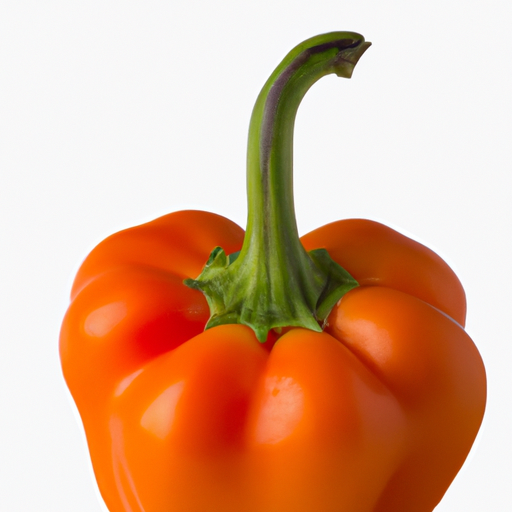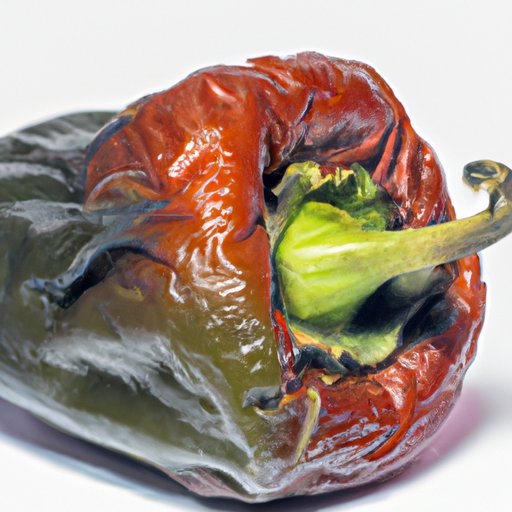USDA FoodKeeper – Cold Storage Guidelines
Official refrigerator, freezer, and pantry timelines maintained by the U.S. Department of Agriculture.
Visit USDA FoodKeeperBright and zesty, this vibrant fruit not only adds flavor to your dishes but also packs a nutritional punch. However, with a shelf life of just seven days, proper storage in your pantry is key to enjoying its crispness and color while minimizing waste. Stay on top of freshness, as it’s best consumed before the expiration date for optimal taste and safety.
Get our 16-page guide with exact timelines for 70+ foods. Save €1,500+/year by knowing what's actually safe to eat.


Pantry
50-55°F (10-13°C)
Store in a paper bag in a cool, dark place
7 days
180 days
Wrinkled or soft texture, mold growth
Can be roasted, grilled, stuffed, or pickled
Can be substituted with other types of bell peppers
Sure thing! So, expiration dates and best quality dates for pepper are important to pay attention to. Expiration dates indicate when it's no longer safe to consume the product due to potential health risks. On the other hand, best quality dates suggest when the pepper may start to lose its flavor and potency, but it's still technically safe to eat. For example, if your pepper has passed the expiration date, it's best to play it safe and not use it, as it might not taste good or could even make you sick. However, if it's past the best quality date but looks and smells okay, it's probably still fine to use in a pinch, although the flavor may not be as robust. Personally, I tend to follow expiration dates pretty strictly when it comes to spices like pepper. I feel it's better to be safe than sorry, especially since they're inexpensive to replace. What about you?
To determine if pepper has gone bad, check for any mold growth, discoloration, or unusual spots on the surface. Smell the pepper for any musty or off odors, indicating spoilage. Additionally, feel the pepper for any soft or mushy texture, which can indicate deterioration.
Hey there, Pepper! Let's chat about food safety because nobody wants a foodborne illness ruining their day. Did you know that eating contaminated food can lead to some nasty symptoms like stomach cramps, nausea, diarrhea, and even more serious complications? To stay safe, always remember to wash your hands before handling food, especially after touching raw meat. Cross-contamination is a sneaky culprit, so be sure to keep raw meats separate from ready-to-eat foods to prevent any unwanted germs from hitching a ride. When in doubt, remember the golden rule: "When in the fridge, eat within a smidge!" Leftovers can be a breeding ground for bacteria, so make sure to consume them within a safe timeframe or give them the boot. And hey, if you're unsure about the freshness of a particular ingredient, trust your gut (pun intended) and toss it out. It's always better to be safe than sorry when it comes to your tummy's well-being. Stay safe, stay savvy, and keep those taste buds happy!
Hey there! Storing peppers can be a breeze with a few clever hacks. To keep them fresh longer, store whole peppers in a perforated plastic bag in the refrigerator's crisper drawer. If you've already cut them up, place the pieces in an airtight container with a paper towel to absorb excess moisture. For a fun storage solution, try freezing chopped peppers on a baking sheet before transferring them to a freezer-safe bag. This way, you can easily grab a handful for soups, stir-fries, or omelets without them sticking together. If you have an abundance of peppers, consider pickling or preserving them in oil to enjoy their flavors year-round. I love making a quick pickled pepper relish to add a zing to sandwiches and salads. Remember, peppers can also be dried for long-term storage. Stringing them up to dry in a warm, well-ventilated area works like a charm! With these tips, you can make the most of your pepper harvest and enjoy their vibrant flavors whenever you please. Happy cooking!
Hey there! Let's chat about the amazing pepper! Did you know that black pepper was once so valuable it was used as currency in ancient times? Yep, it was even found in the nostrils of Ramses II during mummification in Egypt, showing its importance. Pepper has a rich history and has been used for centuries not only as a spice but also for its medicinal properties. It was highly sought after in the spice trade routes, which led to the exploration of new lands and the colonization of countries like India and Indonesia. In many cultures, pepper is considered a symbol of wealth, abundance, and even protection against evil spirits. It's a staple in cuisines worldwide, from Indian curries to Italian pasta dishes. And let's not forget the satisfying kick it adds to our favorite snacks like popcorn or avocado toast! So, next time you sprinkle some pepper on your meal, remember the fascinating journey this little spice has been on throughout history. Enjoy the flavor, the aroma, and the stories behind each tiny peppercorn!
If Pepper has been stored at room temperature for 2 days, it's best to discard it. Bacteria can multiply rapidly at room temperature, increasing the risk of foodborne illness. To ensure food safety, always store Pepper in the pantry and consume it within 7 days of purchase.
When you freeze Pepper, its texture may slightly change upon thawing. The cell structure of Pepper can break down, leading to a softer texture. To minimize texture changes, consider using frozen Pepper in cooked dishes like soups or stews rather than consuming it raw.
Yes, the type of container can impact Pepper's shelf life. Airtight containers can help maintain freshness and prevent moisture loss, extending the shelf life of Pepper. Opt for containers specifically designed for storing fruits and vegetables to ensure proper ventilation and preservation.
It's best to store Pepper away from onions in the pantry. Onions release ethylene gas, which can cause Pepper to ripen and spoil more quickly. To prevent cross-contamination and maintain the quality of both foods, store Pepper in a separate area from onions.
Cooking Pepper can extend its shelf life by a few extra days. Heat kills bacteria and slows down the process of spoilage, making cooked Pepper safer to consume for a slightly longer period compared to raw Pepper. Ensure proper cooking temperatures and storage to maximize freshness.
While the shelf life of Pepper is generally consistent, different brands may have slight variations due to factors like packaging quality and handling processes. Always refer to the expiration date on the package and follow storage instructions provided by the specific brand to ensure optimal freshness.
Pepper tends to last longer when stored in cooler temperatures, such as during winter. Higher temperatures in summer can accelerate the ripening process and lead to faster spoilage of Pepper. To prolong the shelf life of Pepper, store it in a cool, dry place away from direct sunlight.
When transporting Pepper for a 6-hour road trip, pack it in a cooler with ice packs to maintain a consistent temperature. Avoid leaving Pepper exposed to heat or sunlight in the car. Once you reach your destination, promptly refrigerate or freeze any remaining Pepper to preserve its freshness.
Stop guessing about expiration dates. Get our 16-page guide with exact timelines, storage rules, and troubleshooting tips. Save €1,500+/year.
Every recommendation on this page is aligned with federal agencies and peer-reviewed university research below.
Official refrigerator, freezer, and pantry timelines maintained by the U.S. Department of Agriculture.
Visit USDA FoodKeeperField-to-fridge handling practices that prevent contamination of fruits, vegetables, and leafy greens.
Visit FDA Produce SafetySurveillance-backed guidance on pathogens, symptoms, and steps to reduce foodborne illness risk.
Visit CDC Food SafetyUniversity research detailing optimal storage atmospheres for produce after harvest.
Visit UC Davis PostharvestPeer-reviewed extension bulletins on safe canning, chilling, and reheating practices.
Visit Penn State ExtensionNeed deeper reading? Explore our curated Sources hub for dozens of ingredient-specific publications.
Scan your food directly and get instant safety info using our AI-powered camera feature.
Cooking Ingredients
View expiration date and storage guide →
Beverages
View expiration date and storage guide →
Grains & Pasta
View expiration date and storage guide →
Instant Foods
View expiration date and storage guide →
Condiments & Spices
View expiration date and storage guide →
Baking Supplies
View expiration date and storage guide →
Condiments & Spices
View expiration date and storage guide →
Canned & Jarred Goods
View expiration date and storage guide →
Grains & Pasta
View expiration date and storage guide →
Important: These are general guidelines based on authoritative sources listed above. Always use your best judgment and when in doubt, throw it out. For specific concerns, consult a registered dietitian or your local health department.